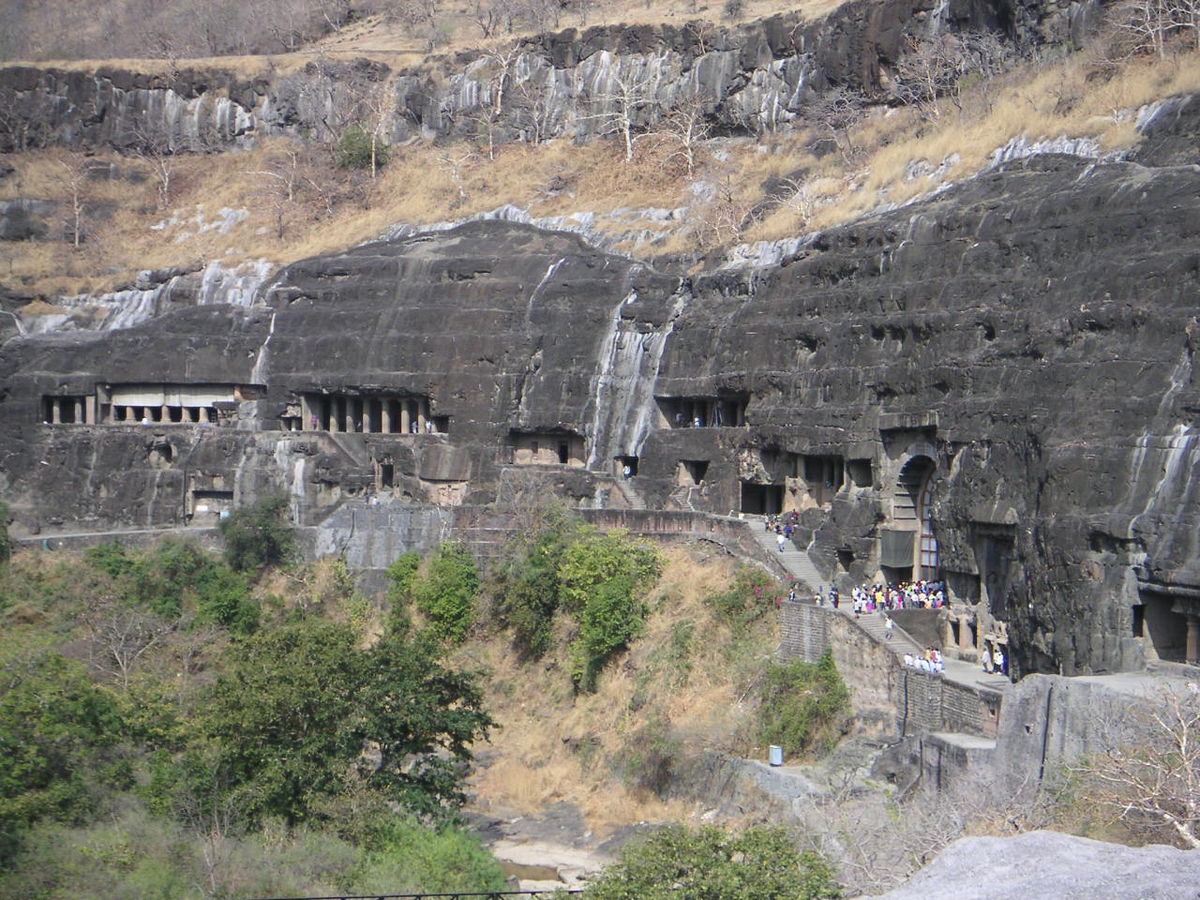7. Ajanta Ellora Caves:

The Ellora Caves and the Ajanta Caves are near Aurangabad in Maharashtra. Chalukya and Rashtrakuta kings ruled over the Deccan from the middle of the 6th century AD to almost the end of the 12th century. The former were tolerant of all religions and, under their liberal patronage, the technique of excavating rock-cut temples reached a high degree of perfection. With the rise of the Rashtrakuta and other powers in the Deccan, there was a decline of Buddhist influence, but artistic activity continued unabated. Rock-hewn architecture reached its zenith in western India as the Western Ghats provided suitable sites for excavation and carving. No existing caves as such were used. Thus architecture was sculpture on a mass scale. The solidity of the rock obviated the need for periodic repairs, and many of the temples are in a state of good preservation to this day.
An aesthetic vision and advanced technical knowledge combined in the architects. It is interesting to note that the excavation usually proceeded from the top downwards—the natural rock-surface below providing a platform and eliminating the necessity of scaffolding. The Ajanta Caves, accidentally discovered by a shooting party in 1829, are excavated out of amygdaloid trap rock, and situated in the scarped side of a deep ravine that is shaped like a crescent. They are entirely Buddhist and date from about 200 BC to approximately 650 AD. It is of interest to note that the Chinese Buddhist travelers, Hiuen Tsang and Fa Hien, refer to Ajanta in accounts of their travels. Of the 29 excavations, four are chaitya halls (all differing in design) and the rest are viharas. The decorative motifs differ with the age of the excavations.
The Hinayana and Mahayana phases are also well defined, the first being simpler the second being much more decorative and characterised by images of the Buddha. The caves are unique in that they combine three forms of art—architecture, sculpture and painting. The technique employed in the frescoes was to spread on the rough surface of the rock a layer of clay mixed with cow- dung and rice-husks. Sometimes pounded brick mixed with fibre was added.
Here is Top Best Places To Visit In India
1. Agra:
2. Delhi:
3. Varanasi:
4. Jaipur:
5. Amritsar:
6. Udaipur:
7. Ajanta Ellora Caves:
8. Khajuraho:
9. Jaisalmer:
10. Leh Ladakh:
